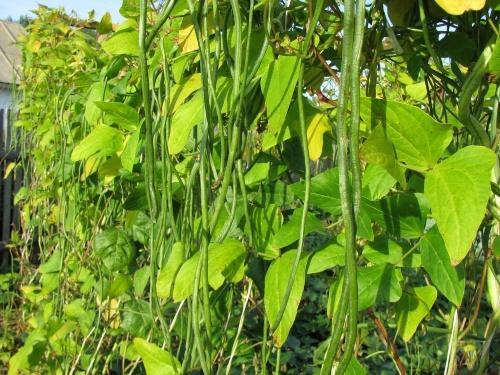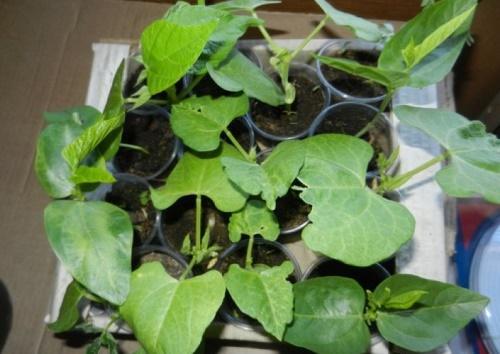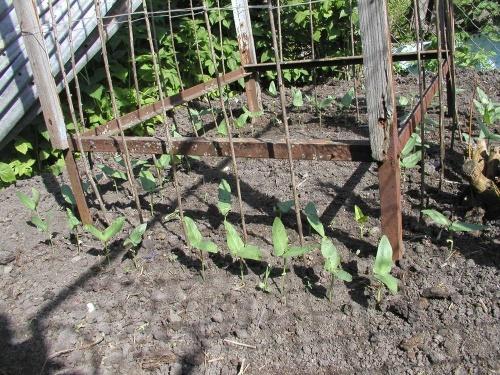How to grow vegetable cowpea - the secrets of a bountiful harvest
 Cowpea is still not often found in garden beds, but slowly it is confidently replacing asparagus beans. Its long and thin pods are softer than regular asparagus due to their less fibrous structure. In addition, there is nothing difficult in how to grow vegetable cowpea. It grows like our regular beans, with almost the same planting and maintenance requirements. But it ripens much earlier and will delight you with a plentiful and tasty harvest that can be harvested all summer. And the curly lashes of plants, dexterously climbing up the support, will create a picturesque arch with amazing colorful flowering.
Cowpea is still not often found in garden beds, but slowly it is confidently replacing asparagus beans. Its long and thin pods are softer than regular asparagus due to their less fibrous structure. In addition, there is nothing difficult in how to grow vegetable cowpea. It grows like our regular beans, with almost the same planting and maintenance requirements. But it ripens much earlier and will delight you with a plentiful and tasty harvest that can be harvested all summer. And the curly lashes of plants, dexterously climbing up the support, will create a picturesque arch with amazing colorful flowering.
By its nature, cowpea is a tropical plant that came to us from distant Africa. Therefore, when growing it, one should take into account the increased requirements of the culture for heat and light. In general, this is a completely acclimatized to our conditions and unpretentious beans, just with very long pods. It can grow as a bush, but more often it has long, thin shoots, reaching 5 m.
Features of planting cowpea depending on the growing climate

- In the southern zone, it is possible to plant cowpea immediately in open ground. But this can be done not earlier than stable warm weather is established (not lower than 15 ° C). The soil should warm up to 10 °, usually at the end of April. The beans should be laid out in holes 2-3 pieces, leaving at least 45 cm between them.If all the seeds sprout, leave one of the strongest plants in each hole, and remove the rest.
- For the middle lane, planting cowpea is possible only through seedlings. For seedlings, seeds must be planted a month before planting in open ground. This is roughly the end of March - beginning of April. It is better to plant individually - cowpea seedlings do not tolerate picking well. The grown bushes can be planted in the garden at the end of April - at the beginning of May.
- In the northern regions, cowpea is grown mainly in greenhouses. It is convenient to plant it immediately in rows with a row spacing of 50 cm and a distance between bushes from 30 cm.
Given that the shell of the beans is dense, it is advisable to soak them before planting. And for the prevention of diseases, the seeds must be disinfected in a solution of potassium permanganate.
How to grow vegetable cowpea: planting care
 Cowpea beds are best placed on the sunny side of the site, where there is no wind. Its gusts can tear the long lashes of the plant, and lack of light will reduce yields. The site must be dug up in the fall with the introduction of humus.
Cowpea beds are best placed on the sunny side of the site, where there is no wind. Its gusts can tear the long lashes of the plant, and lack of light will reduce yields. The site must be dug up in the fall with the introduction of humus.
The cowpea can be planted in the same place no earlier than after 3 years. Although the plant enriches the soil with nitrogen, it selects many other useful substances from it. The best predecessors are nightshades, crucifers, and cucumbers.
Caring for cowpea vegetable is akin to growing beans and consists in simple measures:
- Weeding and carefully loosening the beds between the bushes that have grown.
- Watering as needed. It is impossible to fill in - the culture does not tolerate stagnant moisture. But it is also impossible to allow the soil to dry out, otherwise the ovary will fall off.
- Top dressing by alternating organic matter (mullein infusion) and mineral preparations (superphosphate, potassium chloride).
- It is imperative to install a support along which the long shoots of the cowpea will trail.
 It is better to pick the pods when they are young, after about 10 days, as they have formed. At this stage, the cowpea is soft and juicy. The pods can be cut and frozen. At the same time, the plant bears fruit almost until autumn, and cutting off young pods stimulates the appearance of a new ovary. To collect the seeds, you need to allow them to fully mature and become dry.
It is better to pick the pods when they are young, after about 10 days, as they have formed. At this stage, the cowpea is soft and juicy. The pods can be cut and frozen. At the same time, the plant bears fruit almost until autumn, and cutting off young pods stimulates the appearance of a new ovary. To collect the seeds, you need to allow them to fully mature and become dry.